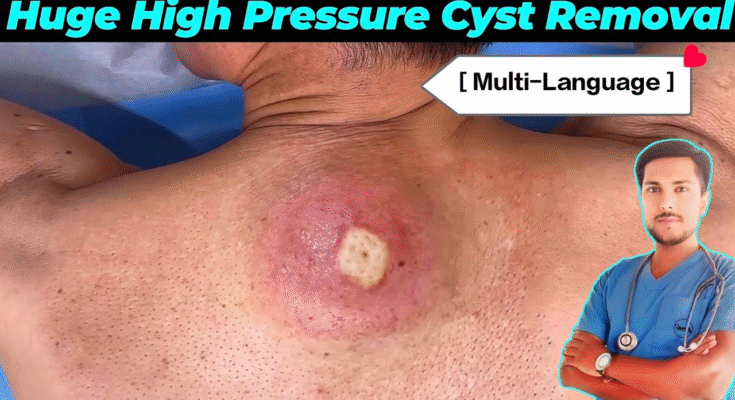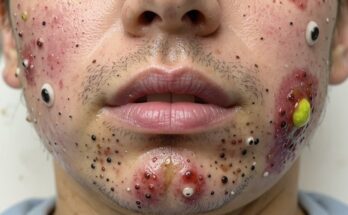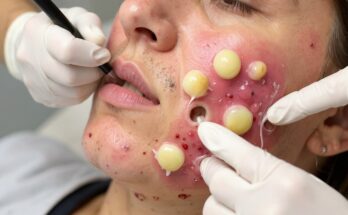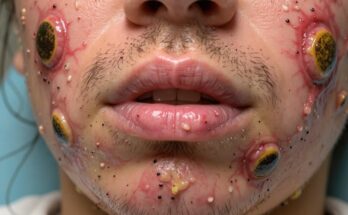Dealing with a pimple can be frustrating, especially when it appears right before an important event. The instinct to squeeze or pop it can feel almost irresistible, but doing so often causes more harm than good. Poor handling can lead to redness, swelling, dark spots, scarring, or even infections. The good news? You can manage a pimple safely—without damaging your skin—if you follow the correct steps and use the right techniques.
Here is the right way to handle a pimple safely from start to finish.
1. Understand What Type of Pimple You’re Dealing With
Not all pimples are the same, and not all can be treated the same way. Before touching anything, identify the type:
Whitehead or Closed Comedone
A small bump with a white top. This is the closest to being “ready,” but still requires careful handling.
Blackhead or Open Comedone
A clogged pore with a dark surface. These don’t need squeezing; gentle exfoliation is safer.
Inflamed Pimple or Papule
Red, swollen, and painful—absolutely do not attempt to pop.
Pustule
Similar to a whitehead but filled with pus. Still risky to pop, but treatable with proper care.
Cyst or Nodule
Large, deep, painful bumps. Never try to pop these—they require medical attention.
Correct identification prevents skin trauma and helps you choose the safest care method.
2. Start With a Gentle Cleansing Routine
Before doing anything else, clean the skin properly. Dirt, oil, and bacteria increase inflammation and raise the risk of infection.
How to cleanse safely:
-
Use a mild, non-drying cleanser
-
Avoid scrubbing or using rough cloths
-
Wash hands thoroughly before touching your face
A clean surface reduces irritation and prepares the skin for treatment.
3. Reduce Inflammation First
Most pimples look worse because they’re swollen. The key is to calm the area before applying any treatment.
Effective ways to reduce swelling:
Cold Compress:
-
Wrap an ice cube in a cloth
-
Apply for 5–10 minutes
-
Reduces redness and pain
Anti-inflammatory gels:
-
Products with niacinamide, aloe vera, or green tea extract calm the skin
Reducing inflammation helps the pimple heal faster and prevents the urge to pop it.
4. Use the Right Spot Treatments
Spot treatments can shrink pimples quickly without damaging the skin. The right ingredients make a big difference.
The most effective options:
Salicylic Acid (BHA)
-
Penetrates pores
-
Removes excess oil
-
Helps unclog whiteheads and blackheads
Benzoyl Peroxide
-
Kills acne-causing bacteria
-
Best for inflamed pimples and pustules
Tea Tree Oil
-
Natural antibacterial option
-
Use sparingly to avoid irritation
Retinoids (at night)
-
Speed cell turnover
-
Prevent future clogs
Avoid using all products at once—stick to one or two treatments to prevent dryness or sensitivity.
5. Use a Warm Compress for Whiteheads
A warm compress helps soften the top layer of skin and encourages the pimple to drain naturally—without squeezing.
How to do it properly:
-
Dip a clean cloth in warm (not hot) water
-
Press it gently on the pimple for 10–15 minutes
-
Repeat 2–3 times a day
This can help a whitehead come to the surface and drain by itself, reducing the need for popping.
6. Apply an Acne Patch
Hydrocolloid patches are one of the safest ways to handle an active pimple. They absorb fluid, protect the area, and prevent picking.
Benefits of acne patches:
-
Reduce inflammation overnight
-
Keep bacteria out
-
Stop you from touching or squeezing
-
Speed healing
Some patches also contain salicylic acid or tea tree oil for added treatment.
7. When Not to Pop a Pimple
Knowing when to leave a pimple alone is crucial. Avoid popping if:
-
It’s painful
-
There’s no visible white head
-
It’s deep under the skin
-
It’s red and swollen
-
It’s on a sensitive area like the nose triangle
Popping in these cases almost always leads to worse inflammation, scarring, or infection.
8. If You Absolutely Must Extract, Do It the Safe Way
Dermatologists strongly discourage popping pimples, but if the pimple is truly ready, you can follow safer guidelines.
How to do it safely:
-
Clean your hands with soap
-
Sanitize a needle with alcohol
-
Use only the tip to make a tiny opening
-
Wrap fingers with clean tissue
-
Apply gentle pressure downward, not inward
-
Stop immediately if nothing comes out
Afterward:
-
Apply benzoyl peroxide or salicylic acid
-
Apply a hydrocolloid patch
Never force a pimple that isn’t ready.
9. Care for the Skin After Treatment
After handling a pimple, aftercare is essential to prevent scarring or dark spots.
Post-pimple care includes:
-
Applying a soothing moisturizer
-
Using aloe vera or niacinamide
-
Avoiding makeup on the area for 24 hours
-
Wearing sunscreen every day
Sun exposure darkens healing pimples and can turn them into long-lasting marks.
10. Prevent Future Pimples the Right Way
Handling a pimple safely is good—but preventing them is even better.
Prevention tips:
-
Wash pillowcases twice a week
-
Avoid touching your face
-
Use non-comedogenic skincare and makeup
-
Exfoliate gently 2–3 times a week
-
Keep hair away from your face
-
Maintain a consistent skincare routine
Healthy habits reduce breakouts and make it easier to manage your skin long-term.



